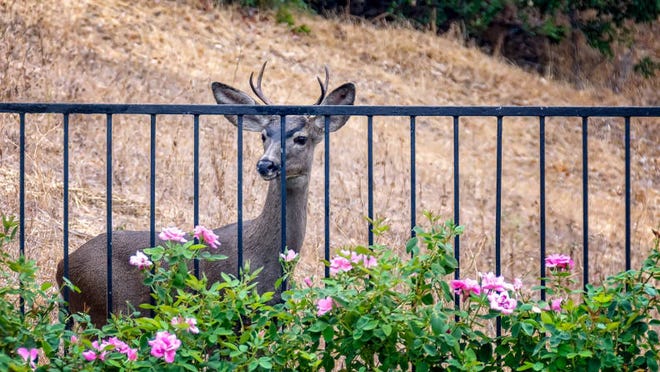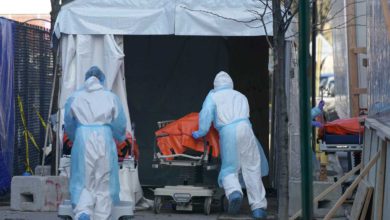
- The USDA study showed that 40% of deer tested across four states in 2021 were positive for COVID antibodies.
- None of the deer in the study showed clinical symptoms of the virus, according to the USDA.
- The USDA came to no conclusions about how the deer were exposed: “It’s possible they were exposed through people, the environment, other deer, or another animal species.”
A study by the U.S. Department of Agriculture has found that white-tail deer, the kind some people will see in their backyards, are being exposed to SARS-CoV-2, the virus that causes COVID-19.
The study, not yet peer-reviewed, showed that 40% of deer tested across four states in 2021 were positive for antibodies, meaning they had been exposed to the virus at some point. The positive tests do not necessarily indicate deer had active infections.
The findings raise questions about whether deer are transmitting the virus among themselves and how their interactions with humans could affect spread.
"At the moment, there’s no immediate cause for concern but justification for precaution. Just as we socially distance from people who could be infected, we also have to think about socially distancing from some animals who could potentially be infected," Peter Rabinowitz, a physician who specializes in zoonotic diseases and co-directs the University of Washington Alliance for Pandemic Preparedness, told USA TODAY on Wednesday.
"This definitely justifies continued surveillance, so we need to look at more deer populations in more places... how did the deer get infected, how much are they actually shedding virus and infecting other deer, and posing risk to humans?" he said.
The deer were studied in Illinois, Michigan, New York and Pennsylvania. The USDA's Animal and Plant Health Inspection Service tested 481 deer between January 2020 and March 2021, and found 33% were positive for SARS-CoV-2 antibodies. The percentage was highest in Michigan, with 67% of 113 samples testing positive, and lowest in Illinois where 7% of 101 samples were positive.
Biden administration:COVID-19 booster shot for Pfizer, Moderna vaccines will be available Sept. 20
Looking at just the samples tested between January and March this year, 40% of 152 samples tested positive. The agency said the tests on white-tail deer in the four states cannot be extrapolated to U.S. deer populations as a whole, and that none of the deer in the study showed clinical symptoms of the virus.
The USDA said the study came to no conclusions on how the deer were becoming exposed. "It’s possible they were exposed through people, the environment, other deer, or another animal species," the USDA said.
But one important factor is that over time, deer have had more contact with humans, Rabinowitz said. Because of where people are living, deer have been coming closer to houses and coming in contact with the foliage near dwellings.
There have been previous known transmissions between humans and animals, including with animals in zoos and farmed mink, among which population the virus spread and mutated, then reinfected humans in some cases.

Researchers already knew white-tailed deer were capable of infection because they have similar receptors as found in humans, Rabinowitz said, so it's not a surprise that deer would show exposure in the wild.
What's concerning, he said, is the potential for the virus to inhabit an "animal reservoir," where the virus spreads and mutates among a new host, in this case, deer, and not cause illness in the host but could reinfect recovering human populations and cause illness.
"Widespread human infections with SARS-CoV-2 combined with human-wildlife interactions create the potential for spillover between people and animals," the USDA said.
There are about 30 million white-tail deer around the continental U.S., found in most states.
People who interact with deer through activities such as hunting and and harvesting game meat should not be worried about getting COVID-19 from those activities, the USDA said, but they should take basic hygiene precautions when processing animals.
Pope calls for vaccines:Would you get COVID-19 vaccine if the pope asked you to? He calls it 'an act of love.'
Thomas DeLiberto, assistant director at the USDA National Wildlife Research Center, told the Detroit Free Press that the risk to humans from deer is considered quite low.
"This is a human-adapted pathogen. In its current form, it likes to be in people and the greatest risk to people is transmission from other infected people," DeLiberto said.
Rabinowitz, who also directs the University of Washington Center for One Health Research, said the study demonstrates the importance of studying the relationships between humans, animals and the environment when it comes to viruses like the coronavirus.
"We have to realize that these zoonotic pathogens are moving between humans and animals and the environment. We have to understand those connections better so we can prevent worse outbreaks," he said.
Source link









